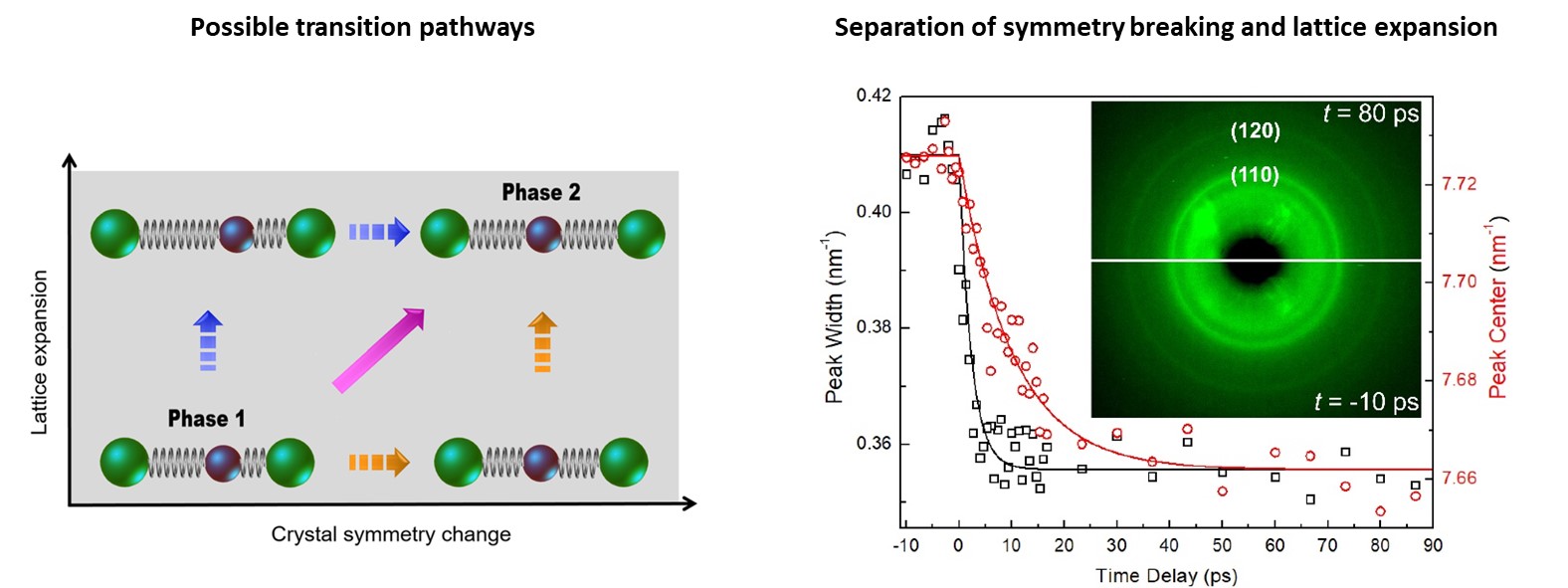Ultrafast electron diffraction (UED) and its exploration of photoexcited materials
1. Concurrent probing of electron-lattice dephasing induced by photoexcitation in CDW material 1T-TaSeTe (PRB 101, 100304(R) (2020))

(a) Scattering-angle-dependent dynamics measured via UED. Schematic illustrating that scattering from valence electrons is predominant at small angles, whereas scattering from nuclei is significant at high angles. An experimental UED pattern showing multiple Bragg reflections and SLRs. Nine sets of SLRs were selected for the measurements with their scattering angles marked by the dashed lines. (b) Measurement of the time at the cusp point tc of the SLRs during the lattice relaxation process as a function of the scattering vector length s. Two-exponential fitting curves for nine sets of SLRs, showing a shift of tc toward increased time delay with the increase of scattering vector s. (c) Charge-density mapping of the Ta plane based on DFT calculations for states with no CDW and CDW. (d) Structure factors of the CDW state were calculated, corresponding to the nine measured SLRs, using valence charges and total charges of Ta and Se atoms based on the electronic structures in (c). The ratios of the scattering intensity from valence electrons to the total intensity are plotted for x-ray and electron diffraction.
2. Probing the pathway of structural phase transition in Cu2S (APL 113, 041904 (2018))

Left: schematic of a structural phase transition involving crystal symmetry breaking and lattice expansion in a 1D assembly of atoms. Phase 1 has two types of atoms with unequal spacing. Phase 2 has the same group of atoms with altered lattice symmetry and spacing. Arrows indicate the possible transition pathways in the ultrafast time domain. Right: (Inset) A comparison of UED patterns taken before (bottom) and after(top) laser pump, corresponding to the monoclinic L-phase and hexagonal H-phase, respectively. The change in the (120) peak width and the center position after the laser pump. The separation of the temporal evolution indicates that the crystal symmetry breaking occurs much faster than the lattice expansion.


 中文
中文 Login
Login
